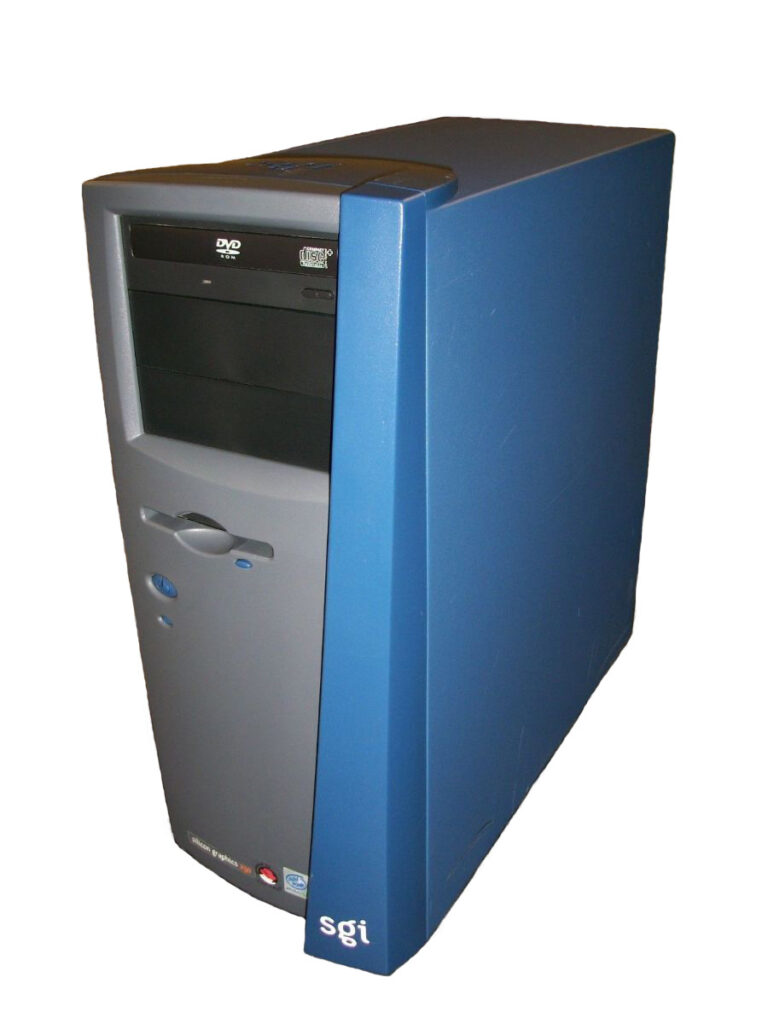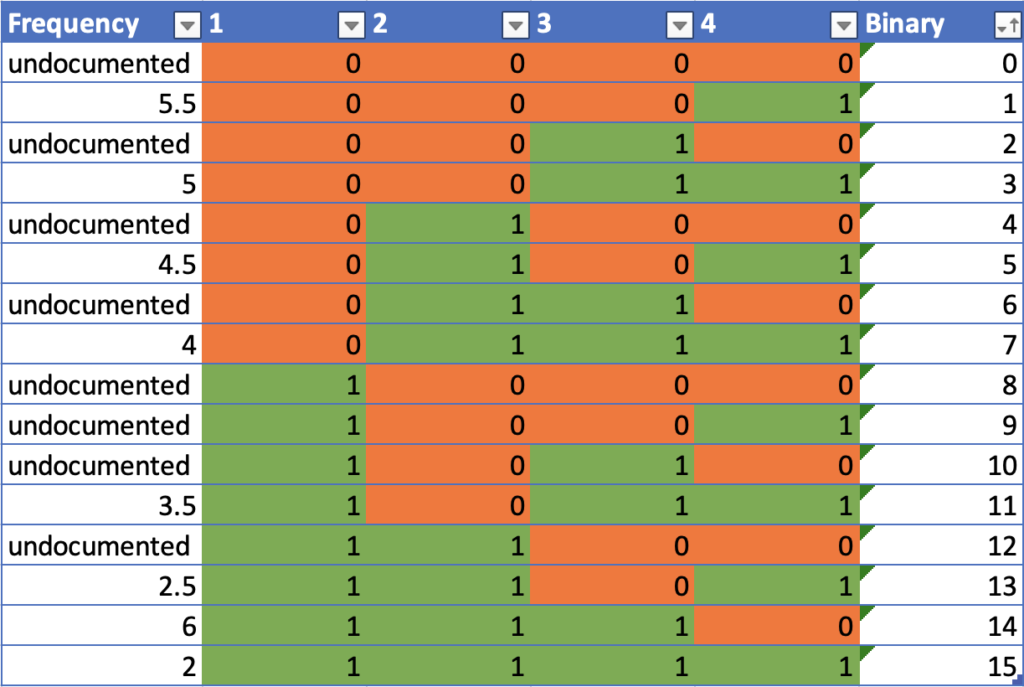Posted on July 6, 2021
SGI 230 Visual Workstation
Silicon Graphics, renowed for building highend graphical UNIX workstations, entered the Wintel world in 1999. Why? Competition. Here’s one of these results: A medium prices standard PC, in a SGI-branded tower-case.
Quick Links:
Historic Overview
With the Wintel machines constantly catching up in performance and capabilities, Silicon Graphics was to enter the PC market to defend their markets. To result of this initiative was a series of shortlived graphical Windows/Intel workstations from a vendor, that traditionally did UNIX workstations in the premium segment.

Trying to compete in the PC market is said to have put additional pressure on Silicon Graphics. Firstly, they would build Intel machines. Secondly, they’d rely on Windows NT and later Windows 2000. Coming from a pure MIPS world, that was set around SGIs own IRIX operation system and an entire entourage of applications built aroud it, this was a major change by itself.
Thirdly, SGI machines where very expensive, ranging into the tens of thousands, sometimes even into the hundreds of thousands of dollars. This price premium was hard to justify and garner in the PC market, that was dominated by Dell, COMPAQ, HP, and others at the time.
So SGI entered the market with a Wintel lineup, that was propably doomed to failure from the get go. But was this also because the system per se where bad?
Well, that depends on the viewpoint. The SGI 230 models, like it’s bigger brothers, the 330 and the 550 models, where pretty much standard PCs, sporting VIA (230/330) or Intel (550) mainboards chipsets with a traditional PC BIOS in combination with Intel Pentium III/XEON CPUs, in either single or dual CPU configurations, and a clock speed in the range of 733 MHz to 1 GHz. As all CPUs are socketed, they could be swapped by faster ones, and with full PC compatibility, these systems would even support to run Windows XP.
The 230/330/550 models are in fact the last bow from SGI to the Wintel world, as these systems were introduced in 2000/2001 to respond to competition and the price pressure. In fact, as opposed to their predessors, the term “workstation” is not well deserved for these later models.
Having said that, if it weren’t for the special SGI-branded case (tower form factor), one wouldn’t really be able to tell the difference between these and any other standard PCs at the time. Still a collectible item, as it stands witness for this important bad sad chapter in Silicon Graphics decline.
If you’re after a real SGI “Wintel” workstation, that also deserves the name “workstation”, the SGI 320/540 should be it. These are build around an entirely different architecture, have the custom ARC firmware, are thus not fully PC compatible, and require a special HAL, that is officially only supported in Windows NT 4.0 and Windows 2000. But that’s definitely another story.
Addition CPU & Mainboard Info
The mainboard used in this machine is the ACER M23D, which features the VIA Apollo 133 A chipset. This chipset supports Pentium III Coppermine CPUs, which were available in frequencies up to 1133 MHz.
And although SGI documented only the frequency multipliers between 2 and 6 for this mainboard, which would allow a maximum CPU clock of 6 x 133 MHZ = 800 MHz, the 4 jumpers allow for a total of 16 bits to be configured.
The following table shows all known jumper and frequency configurations, but also the undocumented ones.
I didn’t have the opportunity to find out and document the missing jumper positions myself, as apparently the mainboard supports fully CPU auto-detection, as furtherly explained below.
Please note, that this same mainboard was also used in the ACER ALTOS 350, and the manual of that machine even mentions 866 Clock Pentium III CPUs, which would imply a frequency multiplier of 6.5.
However, that very same documentation as well only mentions multipliers 2 through 6.
But the manual for the ACER ALTOS 350 also mentions explicitely this: “The frequency table is for reference only <..>. The CPU frequency is automatically set and should not be tampered with.”
So we can assume that at time of publication of these reference manuals, the higher clocking CPUs were not yet out on the market, hence the jumper table would not reflect the higher multipliers yet. But with auto-detection in place, it’s not a big deal breaker.
As I went to explore it furtherly in my own video, the mainboard detected the faster 1 GHz Pentium !!! CPU just fine. The catch for a successful CPU upgrade is just the following:
- Only Coppermine Cores are supported, not Tualatin ones!
- I didn’t try the 1.13 GHz Coppermine yet, but reading from Wikipedia I would assume that the first generation 1.13 GHz Coppermines wouldn’t run stable on this mainboard as well, but only the 2nd batch of 2001 (to be verified)
- You need a BIOS update to cover the need for the new CPU microcode (download further down below).
Talking about the BIOS update: The System would boot with the original R01-D0A BIOS release (June 19, 2000) and a newer CPU, but give you a warning about a CPU BIOS code mismatch, requiring you to press a key to continue booting.
The only way I found was to flash a more recent ACER-branded BIOS to this mainboard, which fixes the problem. My research so far didn’t reveal any SGI-branded BIOS more recent than R01-D0A. But applying the ACER BIOS ain’t a big deal, as it’s an ACER mainboard anyway. You just loose the pretty “SGI” BIOS boot screen.

Specs
The PHINTAGE Collection currently holds a SGI 230 Visual Workstation.
| Vendor | Silicon Graphics, Inc |
| Model | SGI 230 Visual Workstation |
| Released | 2000 |
| Original Streetprice | Starting from 2275 US$ |
| Weight | 13.15 KG |
| Dimensions | 20.95 x 48.9 x 48.9 cm |
| Builtin Display | N/A |
| Builtin Battery | N/A |
| CPU | Intel Pentium III @ 733 MHz |
| RAM | 512 MiB RAM |
| Storage | – 128 GiB PATA HDD (after-market upgrade) – PATA CD-ROM Drive – PATA CD-Writer (after-market upgrade, will be removed) – 1.44 MiB 3.5″ Floppy Drive |
| Network Support | Onboard Intel 82559 FastEthernet |
| USB | 2 x USB 1.1 |
| Video Output | nVidia Quadro (1 DVI, 1 VGA, 1 S-VIDEO) |
| Other | PS/2 Mouse Port, PS/2 Keyboard Port, Audio in/out |
| Operating System | Microsoft Windows 2000 |
| Overall Condition | some small scuffs and scratches on caseing |
| Restoration Parts needed | – 5.25″ front bezel |
| Benchmark Results | SiSoft Sandra 2004, CPU benchmark: CPU ALU Dhrystone: 2505 MIPS CPU Whetstone FPU: 969 MFLOPS CPU Whetstone ISSE2: N/A SiSoft Sandra 2004, Multimedia benchmark: Integer x4 ISSE: 6366 it/s Float x4 ISSE2: 7565 it/s SiSoft Sandra 99, CPU benchmark: CPU Dhrystone: 2989 MIPS CPU Whetstone: 993 MFLOPS SiSoft Sandra 99, Multimedia benchmark: Integer ALU: 1752 it/s Floating Point FPU: 6063 it/s Norton Utilities 3.1: Computing Index, relative to IBM/PC: N/A Norton Utilities 4.5: Computing Index, relative to IBM/XT: N/A Norton Utilies 8.0: CPU Speed: 5106.8 |
Gallery
Coming soon.
